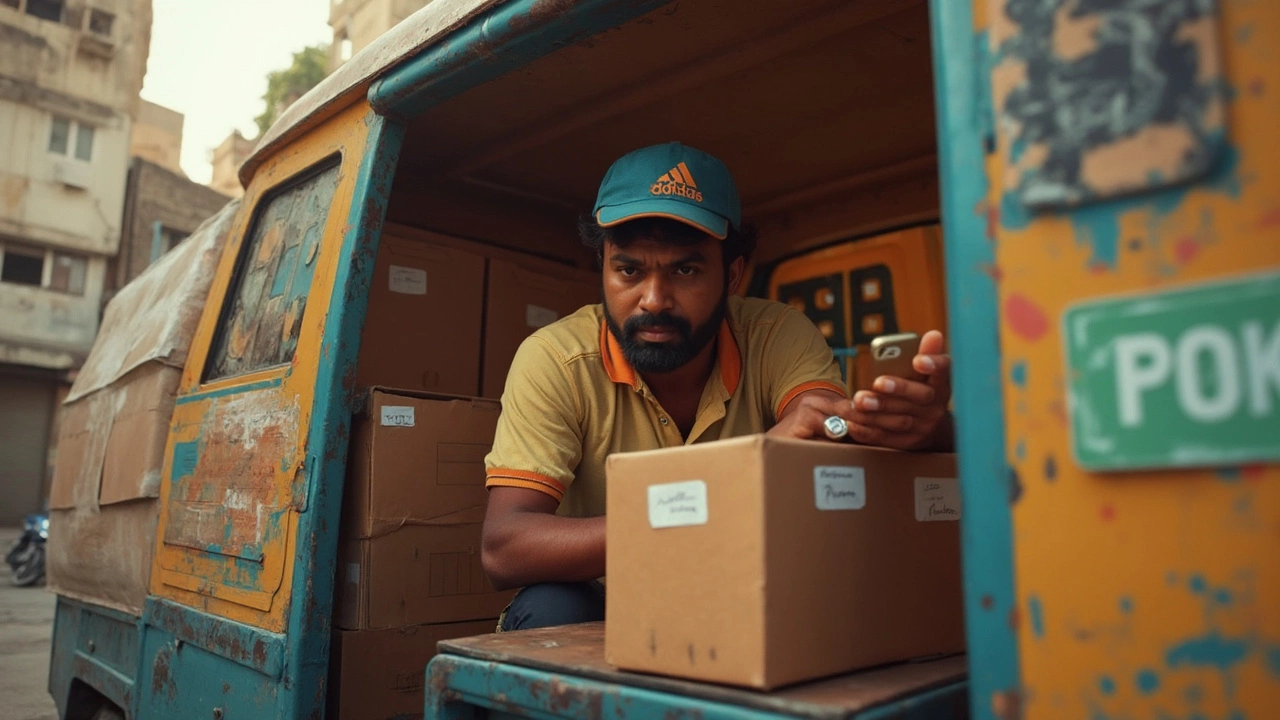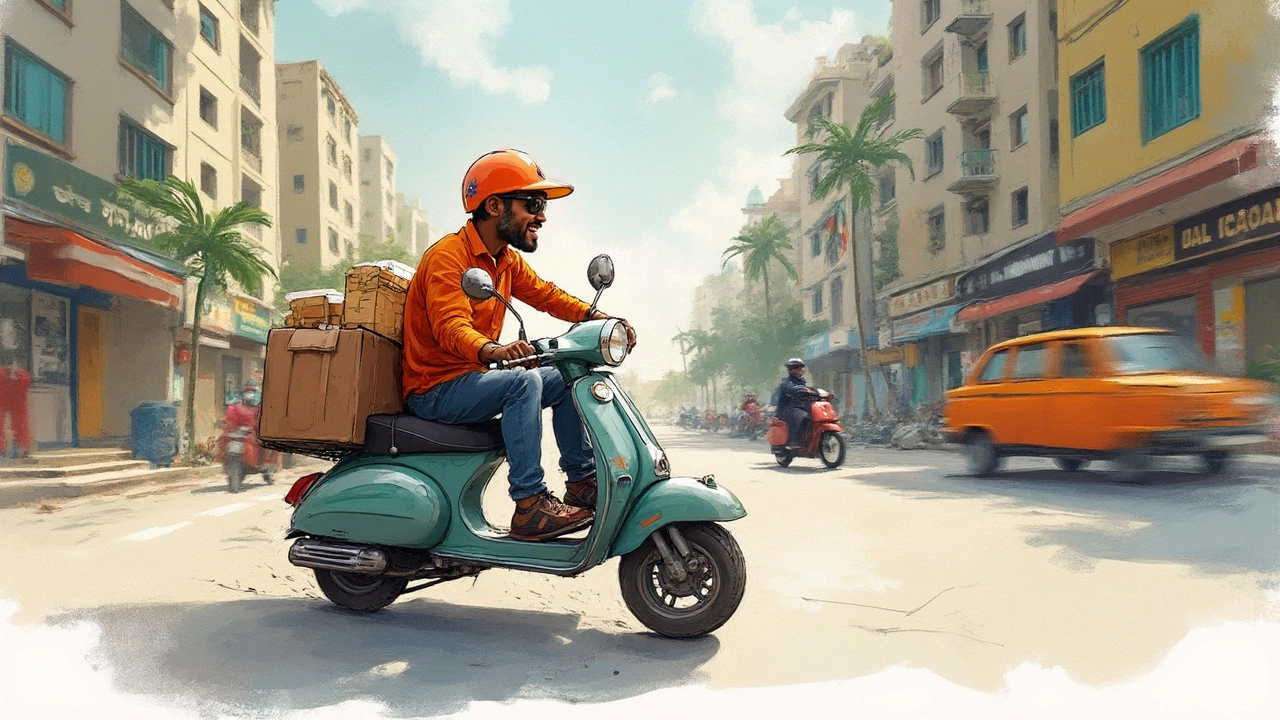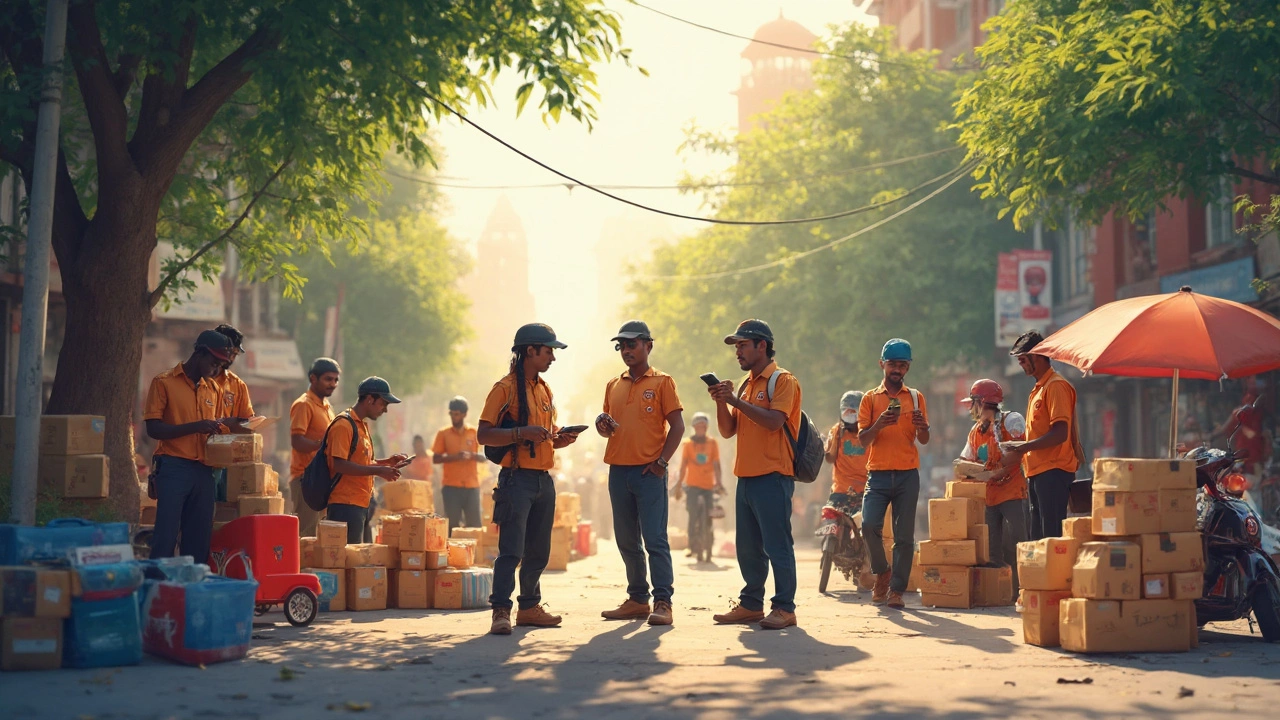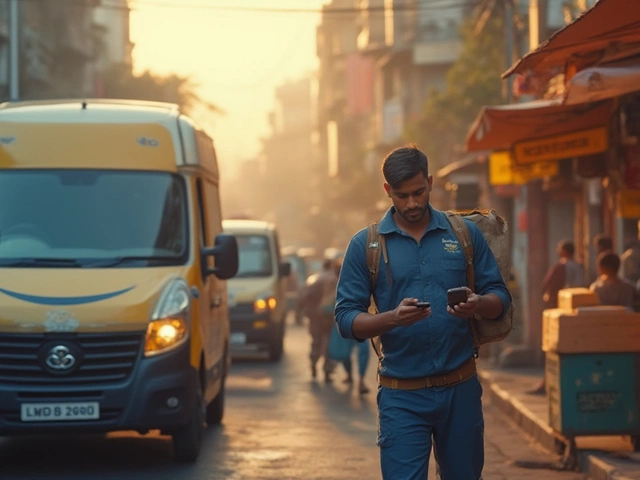Forget those vague guesses you see online—when you start a 3 hour courier block, you want real numbers. It’s usually anywhere from 15 to 45 packages, but the real range depends on things like the company, city traffic, building types, and the day of the week. Weekends? Almost always heavier. Early morning? Sometimes slower. You have to be ready for anything.
Those first few weeks on the job teach you fast—no two blocks feel the same. Sometimes, you get a neat route right through quiet suburbs, where every stop is a minute apart. Other days, a crowded downtown cluster has you dodging double-parked cars and building security just to deliver a single envelope or a heavy cat tree.
If you’re hoping for a simple answer, here’s the hard truth: you won’t know the exact number of packages until right before your shift starts—or, with some companies, not until you pick up. It always pays to check your app and scan your manifest before you drive off. And don’t get caught off guard by those surprise oversized boxes that somehow sneak in with the small stuff.
- What’s Inside a 3 Hour Courier Block?
- How Many Packages Should You Expect?
- What Changes Package Counts?
- Tips for Handling Busy Blocks
- Making the Most of Each Shift
What’s Inside a 3 Hour Courier Block?
Every gig worker wonders what a delivery block actually looks like when they show up for work. For most courier services, a 3 hour block is the chunk of time you’re scheduled to pick up and deliver a batch of packages. It isn’t just about grabbing a few random boxes—these blocks are usually grouped by area and package type for maximum efficiency.
The average block includes packages of all sizes. You might carry envelopes, padded mailers, and heavy boxes, all in one load. The variation comes from online shopping trends, local business deliveries, the day of the week, and even the weather. Some companies will pack your car full, while others may have lighter, quicker drop-offs per block.
| Type | Average Packages per Block | Typical Weight/Size | Usual Delivery Area |
|---|---|---|---|
| Amazon Flex | 20-40 | Mixed (0.5lb - 30lb) | Local zip code |
| UPS Personal Vehicle Driver | 30-60 | Mainly medium (2lb - 20lb) | Urban/neighborhood |
| FedEx Ground SameDay | 15-35 | Mails, small/medium boxes | Wide city area |
You get a manifest—either digital or printed—listing every stop. Some gigs let you preview this right before you start, but you always want to double-check for addresses, apartment codes, and any instructions about signatures or door codes.
Most 3 hour blocks fit a "milk run" model: you head out, drop off as many as you can in a tight area, and loop back if there are close returns. Don’t expect a break unless you finish early. If you want to squeeze the most money out of each block, knowing what’s coming in your load is half the game. Always check for:
- The total package count
- Types of addresses (apartments take longer than houses)
- Oversized or awkward packages
- Peak delivery weeks, like holidays or back-to-school
If you want to avoid surprises, experienced drivers keep a small notepad or use their phone’s notes app to track tricky addresses or common delivery issues. A little prep goes a long way when each minute counts.
How Many Packages Should You Expect?
If you’re diving into a 3 hour courier services shift, you probably want solid numbers. Most drivers carry anywhere from 20 to 45 packages in that window. Amazon Flex drivers, for example, average around 30 to 40 packages in a suburban route, but that can drop to 15-25 for rural areas or climb over 50 during peak season. Food delivery or essentials runs, like what Instacart or DoorDash drivers see, can be fewer and might include a higher percentage of single-item drops.
The load changes based on a lot: company policies, season, neighborhood type, and even your individual rating with the company. Busy times like Black Friday or back-to-school months push package counts up almost everywhere. Here’s what recent data shows for 3 hour delivery blocks (2024 numbers):
| Company | Suburban Route Avg. | Urban Route Avg. | Rural Route Avg. | Peak Season High |
|---|---|---|---|---|
| Amazon Flex | 35 | 28 | 19 | 50+ |
| FedEx Ground | 32 | 25 | 16 | 45 |
| UPS | 30 | 22 | 14 | 44 |
| OnTrac/Lasership | 29 | 23 | 17 | 39 |
Sometimes you’ll get surprised by a high-density block—think apartments or office buildings—which bumps up your package count but cuts down on driving time. Suburbs tend to have more distance but simpler parking. After a few shifts, you’ll start recognizing routes that mean fewer packages but more ground to cover, or those city blocks that test your patience but boost your hourly rate.
If you want to guess your likely load before every block, here’s what to keep in mind:
- Location type: Urban means more stops, less driving per stop, usually more packages stacked close together.
- Time of year: November to January? Expect way more packages.
- Company quirks: Some companies, like Amazon Flex, batch big blocks for veteran drivers or high-rated couriers.
- Shift start time: Afternoon and evening blocks often have the bulk of same-day orders loaded up.
So, while there’s no magic number, you can expect a range—usually!—of 20 to 45 packages in a regular 3 hour block, and you’ll know for sure once you scan in at the depot or review your app’s manifest. Learn the patterns and plan your strategy from there.

What Changes Package Counts?
If you’re out there hustling as a courier, you’ve probably realized that no two delivery blocks are ever the same. The number of packages in a 3 hour block swings wildly for a few solid reasons. Let’s break down exactly what messes with your package load.
Here’s the big stuff that flips your numbers up or down:
- Location. Urban delivery blocks pack in more stops but often smaller packages. Rural or suburban blocks usually mean longer drives, but fewer drops overall.
- Day of the week. Package counts jump on Fridays and Saturdays, especially with food, grocery, and e-commerce spikes. Mondays might be lighter depending on the service.
- Season and holidays. It’s legendary how Black Friday, Christmas, and Prime Day pile up the stops. Couriers see package counts double—sometimes even more—during these peak times.
- Weather. Bad weather throws off schedules and sometimes forces the company to break big loads into smaller ones. You might have more blocks, but fewer packages per run.
- Type of service. Grocery and same-day couriers usually get fewer, bulkier stops; retail/e-commerce couriers (think Amazon Flex) often get tons of quick, lightweight parcels.
| Delivery Type | Average Packages per 3-Hour Block |
|---|---|
| Urban Grocery | 12–20 |
| Suburban Grocery | 8–15 |
| Urban Retail (e.g. Amazon) | 25–45 |
| Suburban Retail | 18–35 |
| Mixed/Other | 15–30 |
Don’t forget the app’s algorithm—sometimes it tries to “balance” blocks, but glitchy days are real. That’s why your route might suddenly have more small stuff or a surprise oversized item when you least expect it.
If you want steady blocks with the best chance of realistic loads, try to choose routes in areas you know well and during quieter times. But if you’re chasing higher pay, be ready to tackle a heavier courier services block during any big sale or holiday rush. It’s all about trade-offs—fewer miles or fewer packages, but rarely both.
Tips for Handling Busy Blocks
When you grab a busy courier block, it pays to have a game plan. Some folks think it’s just about speed, but staying organized saves more time than racing between stops. Here’s what seasoned couriers keep in mind:
- Sort your packages right at the start. It sounds basic, but putting everything in order—either by delivery route or by building—cuts the hunt-and-peck game at each stop. Stack the boxes so you don’t have to climb over stuff to get what you need for each delivery.
- Double-check addresses before leaving the depot. If your app gives you the option, peek at the map before you set out. A little prep means you won’t get surprised by a tricky apartment complex or weird business park entrance halfway through your courier services block.
- Know your peak hours. Most busy routes get slammed late in the afternoons and just after lunch. Companies like Amazon Flex and DoorDash say their delivery volume jumps up to 40% during these windows. Expect more time between stops in traffic, especially on Fridays.
- Keep an eye on building policies. Some apartment complexes require call-ins or signatures. That can eat up time if you’re not ready. Keep entry codes and names handy—snap a pic or jot them down in your notes app.
- Take quick breaks to hydrate and stretch. Skipping breaks just makes you sloppy after an hour or two, especially on hot days or holiday surges. Even a two-minute stretch in the van pays off by the end of the route.
Here’s a quick look at typical stop times in the busiest hours for urban and suburban routes, based on author-collected data shared in courier forums:
| Route Type | Avg. Stops Per Hour | Avg. Time/Stop (min) |
|---|---|---|
| Urban | 8 | 7.5 |
| Suburban | 12 | 5 |
| Mixed (Urban+Suburban) | 10 | 6 |
Things rarely go perfectly, so use these as rough guides. Stack your most distant deliveries first if you want to avoid rush hour jams. Don’t be afraid to call customers ahead if the delivery instructions are unclear—you’ll save your future self a ton of hassle.

Making the Most of Each Shift
If you want to stretch every dollar from your courier block, you need more than fast driving. It’s all about working smarter, not just harder. Success in this job means staying organized, avoiding rookie mistakes, and knowing which small changes can land you bigger tips and faster completion times.
Let’s start with staying organized. Before you leave the warehouse or pickup center, sort your packages right away—by stop order if you can. This saves you from digging around your trunk at every stop. Many pros use sticky notes or even just a sharpie to mark the order, which can seriously cut down wasted minutes.
Watch out for traffic slowdowns, construction, or detours. Apps like Google Maps or Waze are good, but always double-check your route before you get stuck on a main road downtown at rush hour. Avoiding just one major traffic jam can mean the difference between finishing on time and scrambling at the end.
If you’re hitting apartment buildings, get friendly with front desk staff. A smile and a quick intro can speed up your drop-offs, and some buildings will even let you leave several packages with security. That trick alone can shave minutes off your schedule, especially on busy afternoons.
Here’s a quick look at some average stats from drivers across several cities:
| City | Average Packages per 3h Block | Typical Stops | Average Earnings/Block (USD) |
|---|---|---|---|
| Dallas | 36 | 24 | $69 |
| Seattle | 30 | 18 | $71 |
| Orlando | 40 | 25 | $70 |
| New York | 22 | 14 | $78 |
Notice how city area matters—a heavier package load in spacious suburbs might net the same pay as a lighter load in a packed city, but the urban routes come with their own headaches.
- Sort your cargo upfront, so you don’t waste time at each stop
- Keep a reusable bag for small items or grouped packages
- Use multi-stop route apps, not just your car’s GPS
- Track your mileage—gig apps might not always get it right
- Stay hydrated, keep a snack handy, and always plan a restroom break if you’ve got a packed shift
Here’s a pro tip for anyone working several blocks: try to pick consecutive shifts in the same area. This lowers your drive time between shifts, decreases fuel costs, and sometimes even nets early access to package pickups.
And don’t forget—being polite to customers, snapping the required delivery photo, and making sure the package is safe (hidden behind a plant or at the back door) gets you better ratings. Good reviews stack up and can unlock better blocks on almost every courier services app.





